As you are world-building, how integral to your design should a culture’s religion or faith be? How do you craft fantasy world religions? In our first interview of the Tesseracts 18 blog, co-editor Liana K asks ED GREENWOOD to chat with us about how he integrated religion—and whether or not one could call it “faith”— in the shared world he created, Forgotten Realms.
 ED GREENWOOD is an amiable, bearded Canadian writer, game designer, and librarian best known as the creator of The Forgotten Realms® fantasy world. He sold his first fiction at age six, and has since published more than 200 books that have sold millions of copies worldwide in over two dozen languages, and won dozens of writing and gaming awards. Ed has judged the World Fantasy Awards and the Sunburst Awards, hosted radio shows, acted onstage, explored caves, jousted, and been Santa Claus (but not all on the same day). His upcoming books include The Herald from Wizards of the Coast, and The Iron Assassin, a steampunk novel from Tor Books.
ED GREENWOOD is an amiable, bearded Canadian writer, game designer, and librarian best known as the creator of The Forgotten Realms® fantasy world. He sold his first fiction at age six, and has since published more than 200 books that have sold millions of copies worldwide in over two dozen languages, and won dozens of writing and gaming awards. Ed has judged the World Fantasy Awards and the Sunburst Awards, hosted radio shows, acted onstage, explored caves, jousted, and been Santa Claus (but not all on the same day). His upcoming books include The Herald from Wizards of the Coast, and The Iron Assassin, a steampunk novel from Tor Books.
_
TESS 18: At what stage in the development of Forgotten Realms did the pantheon of gods begin to take shape? Did you create it in a deliberate, organized way, or did it grow as you told more and more stories?
A: Both (that is, it grew for a tiny bit at the outset, story by story, then I sat down and organized everything, then it went along for some years until I adopted the D&D® game for use in the Realms (1978), and then got redeveloped in light of the game needs. The story of how I redeveloped the pantheon is told in issue #54 of DRAGON Magazine (or “The Dragon,” as it was back then). So I began with my story needs for deities (I needed good, bad, and neutral, plus portfolios; that is, a god of the forest, a god of storms, a god of war, and so on) and later added game needs (I needed a balanced pantheon of deities representing all of the D&D® game alignments of the time “equally,” so greater gods, lesser gods, and demigods of every alignment flavour). I needed alliances and enmities among the gods, and I needed TOO MANY gods in the setting for every game player to memorize everything about them, to encourage roleplaying (and not metagaming based in what players had memorized).
So some gods spent years of real time more or less as placeholders, and developed as I went along (the Forgotten Realms® began in 1966, when I was six years old, well before the D&D® game first appeared in 1973, as a setting for my fantasy stories). Some of the non-human pantheon gods were developed after the Realms was a published game setting, and other designers introduced new gods (Cyric) and killed off existing ones (notably during the Time of Troubles).
TESS 18: Did the gods come first, or were their Chosen your focus? ie: did you come up with Elminster first, then create Mystra?
A: Mortal characters first, always, then the flavor of the world determined the nature/“character” of individual gods of the various portfolios (i.e. magic was all pervasive in the Realms, so Mystra was, too). For game reasons I needed clerics/priests of every god, but from the start every mortal in all of the Realms “believed in” ALL of the gods. They might primarily venerate one, especially if they were clergy or paladins, but only the insane believed there were no gods, or that there was only one god and all others were false. (I tell real-world players who are strong in their faith that all of the deities are aspects of one true deity that mortals cannot perceive, if that makes the Realms more comfortable for them.)
Although many players seem to prefer having one god for their character, in the Realms all intelligent beings believe in all the gods, and pray to many. For instance, Larendrelle the Jeweler will pray and make offerings to Waukeen for mercantile prosperity and Tymora for good luck often, but if she must make a sea voyage, she’ll pray to Umberlee the sea goddess, Talos the god of storms, Shaundakul the god of wayfarers, and so on.
In my original Realms, only Mystra had Chosen who had any of her divine power (the “silver fire”). All other Chosen were mortals given one or two limited powers (like the ability to fly, or become invisible, or blast things, all for short periods/limited “shots”) in order to fulfill a task important to the god endowing them with those powers. When other designers and fiction writers started working in the Realms, they decided to make full-fledged “Chosen” of every deity (something I regard as something of an unfortunate “arms race”). Mystra’s Chosen were severely limited by the deity in what they were allowed to do; in the hands of other writers, other Chosen became superhero-like brawlers. (Not necessarily inferior to my original concept of the Realms, just different.)
TESS 18: How deeply did you study the religions of our world to create your pantheons? From which traditions beyond Tolkien did you draw?
A: I read voraciously from a very early age, devouring EVERYTHING in my father’s den, from highly technical radar physics manuals to cheesy pulp adventure yarns. It all became grist for my mill. Modern fantasy is rooted in Tolkien, but Lin Carter was republishing all of the elder fantasy classics at the time (Lord Dunsany, William Morris, Beckford, et al) and Howard, Seabury Quinn, Lovecraft, Harold Lamb, Talbot Mundy, and Edgar Rice Burroughs were all being republished, too, not to mention being pastiched by younger writers. I read it all. I have also worked in public libraries from a young age to date, and dipped in to everything. Philosophy and comparative religion were party of my university studies, and I’d already waded through both, not to mention many books on folklore, fairy tales, apocrypha, and the like, in my father’s endless library.
The Realms actually began as a setting for fantasy short stories starring the wheezing, fat old Mirt the Moneylender, a character rooted in Shakespeare’s Falstaff, Guy Gilpatrick’s Glencannon, and Poul Anderson’s Nicholas van Rijn; I was inspired to do such episodic stories by reading Fritz Leiber’s Fafhrd & Mouser tales in FANTASTIC magazine, not Tolkien. Reading The Lord of the Rings inspired me to create a vast and deeply detailed world in which adventures mattered (changed things within the world), so I knew “the Sword Coast” (which I was developing story by story, as Mirt fled one port city a step ahead of rivals or the authorities and journeyed to the next one, destined to do such flits all over again) was part of a larger world I would detail in time. Forty-eight years later, I’m still hard at work on exploring and detailing the Realms.
TESS 18: A centerpiece of Forgotten Realms Dungeons and Dragons is that male and female characters are equal in skills. How do the balances of power among the gods and goddess you created support that?
A: Although my own preferred approach to divine beings is to keep them as mysterious as possible, with cryptic altar utterances and “dream visions” and manifestations (apparitions visible to all that can involve vocal utterances and the movement or even appearance and disappearance of items, e.g. offerings “fade away” from an altar and an item is left in their place), many D&D® gamers want to fight the gods, become gods, and treat the gods very much as the Greeks regarded theirs in “classical” times: super-humans, with exaggerated human emotions, foibles, and behaviors. As designer after designer handled the gods of the Realms in this way, I found it vital to emphasize aspects of the gods I wanted to see reflected in the setting: that sex, crying, and judgment by achievement and ideas rather than gender are all more open in the Realms than in, say, modern-day real-world North America. Certain designers have, consciously or subconsciously, killed off strong female characters in positions of power and replaced them with male ones; I often work to counter that with my own substitutions. What’s become most clear to me is that nothing, the gods in particular, should be or seem frozen and unchanging; everything should be dynamic and evershifting, with marriages, alliances, the rearing of progeny, and the like occurring all the time among the gods. So I have worked to have dynamic female deities “on the move” in the movers-and-shakers sense, rather than relegating them to nurturing mother roles (aside from Chauntea and Eldath, who ARE nurturing mothers). So we have Sune and Sharess and Loviatar and Red Knight and Eilistraee and and Tymora and Sêlune and Shar very much expressing (varying aspects of) femininity, and being very “active” goddesses. I set things up so that the female deities are vital to the pantheon and are always in the thick of things, so they just can’t be ignored or easily or casually sidelined.
TESS 18: Since the gods and goddesses of Toril directly interact with humans, do you consider belief to still be a part of the religions of Forgotten Realms?
A: Certainly. However, there’s a difference between “belief” and “faith.” Faith is what we need in real-world situations where the gods and goddesses don’t personally appear in front of us and do things; we have to believe in them without direct empirical evidence, and that’s “faith.”
Belief in a deity is dead easy when deities walk among us (or we hear amid the “current clack” of passing news and rumors of their deeds, manifestations, and decrees, daily), but belief is more than just accepting that something divine exists. It’s believing in the ethos and aims of a deity, that living one’s mortal life as the deity prefers (or making the right moral choices when balancing between the various desires of different deities in the Realms, because every mortal believes in all of them, but chooses their own path through life, in an endless drifting closer to or farther from this or that deity) is desirable and “right.”
Unthinking obedience, or obedience out of abject fear, may well exist for some individuals in the Realms, but in fictional protagonists and Player Characters (and major NPCs) in the game, I want life to be that endless series of moral choices – – just as, ideally, real lives are lived. So there’s belief in causes, greater goods/benefits, moral codes and decisions that are “right” (and I want fiction and game experiences to focus on them), not mere belief in the existence of a god.
TESS 18: The worship of a dead god whose power still has influence is pretty complex from a theological perspective. In Forgotten Realms, the Dead Three are directly associated with evil. What does it say about a character when they worship a dead god?
A: From the outset, I postulated that the divine strength of a deity (their “blasting power,” if you will) is directly linked to the amount of influence they have in the mortal world. In other words, the more worshippers you as a god have, and what you have those worshippers do (and therefore how fully and in what manner you exploit your divine portfolio as god of war or god of cheese or whatever), determines your strength.
This makes mortals, mortal worship and belief (and here I mean belief as in how utterly loyal mortals will be to you; how much they trust you) vitally important to all deities; it forces them to interact with mortals rather than aloofly ignoring them.
Moreover, gods may be killed, but they are never really dead as long as at least one mortal worships them (and a murmured prayer or even an oath, and a “sign to ward off evil” when entering the ruins of a temple to a dead god, are all worship; it doesn’t require organized clergy with lots of temples and offerings and a detailed creed).
As longtime game designer Jeff Grubb once put it, “In the Realms, death is not necessarily a career-ender; it’s more often a career-changer.”
Moreover, when gods “go down,” other deities may step in, overtly or in the guise of the dead god, to continue to provide spells to priests of the dead god and give them guidance – – so as to gain influence in the mortal world by controlling the clergy and devout faithful of the dead god (in the same way that a real-world general commands their army but may hire mercenaries to acquire greater battlefield strength). Most of the human dead gods are associated with evil (Moander as well as the Dead Three), but not all, and in truth the history of deities in the Realms is a continual flux of interloper gods arriving from other settings, gods rising and falling in power and redefining their portfolios, dying and coming back, and so on. Some of the gods (Jergal, Lathander/Aumanator) are meant to be mysterious in their actions, so mortals (even priests who directly serve these deities) argue heatedly about why the god did thus and so, and “what they’re up to.” So a character worshipping a dead god might be a nihilist, but not necessarily. One could view them as having the strongest faith of all, because they believe the god will “return to life and power,” even if not in their own lifetime, and are willing to support them.
For me, as the creator of, and most active long-term designer in, the Realms, it’s all about providing the maximum number of moral choices for players and their characters.
TESS 18: What is the importance to you of strong factions of defined good, evil, and neutrality in fiction?
A: The presence of active factions or power groups or cabals, and the shifting relationships and conflicts between them, are among the most useful tools a storyteller (either a fiction writer or a game designer) can have at their disposal. If the purpose at hand is to tell a moral tale, identifying those factions strongly with good, evil, or neutrality is useful. If you want to smash evil, it’s very satisfying to have EVIL, bold and big and clearly labeled, for you to battle. In real-life and in most long-term roleplaying game campaign play, shades of gray to everything are more useful and more desirable, allowing more complex moral choices, and exploration of the eternal dilemmas (“Do the ends justify the means?” and “What is one life worth, balanced against X?” and “Is it better to be more efficient/brutal/trampling of liberties but achieve a goal faster?”or “Go slowly and gently and with more regard for liberties, but waste X much more because we were slow, and end up achieving the goal far more slowly or even impartially?” [debates we see in the real world regarding everything from global warming/greenhouse gases, smoking, and seat belt use]).
So the importance of factions of defined good and evil and neutrality, to me, depends on what I’m trying to achieve in a particular fiction project. Tolkien had no overt religion (no temples or priesthoods), but had a titanic clash between clearly-defined good and evil, and more close-up and personal examinations of technology and despoiling versus the good local rural life, in the Shire – – and how participating in those clashes (the Ring bearers, how Merry and Pippin were changed by “going off to foreign parts and fighting”) changes the participants.
Most of the time, my needs and preferences are for shades of gray for everyone, so we can see how power corrupts, and see villains who believe they are doing right, not just villains who twirl their mustaches and glory in the evil they’re consciously doing.
TESS 18: Apotheosis can and does happen in Toril. How do you think the ability to become a god affects a fictional society?
A: It certainly gives Type-A individuals an overarching career path. :}
The important point for me, when creating the Realms and in maintaining it since, was to base everything in personal achievement, NOT predestiny. Otherwise, heroism and moral choice go out the window, and mortals become pawns following a script, not individuals responsible for their own actions and choices.
The foundation of any belief system is hope. That’s what underlies buying lottery tickets and season tickets to perennially losing sports franchises (hello, Maple Leaf fans) and, yes, religion. One way to foster hope is to believe in just rewards in an afterlife. Another is to cleave to the notion that one day Deity X will deliver us to the promised land, or fix Y, or cleanse Z. Yet another is “knowing” that some mortals rise to the ranks of godhood, “make it,” if you will. That on rare occasions, the lottery can be won, and the downtrodden who grumble about how they’d fix things if they just had the chance, get that chance. And that the gods have at least “one of us” among them, and therefore must understand us (and so are worthy of our worship). That underlying knowledge can’t help but have a profound effect on society. Trust in the gods is increased, powerful mortals do things to try to leave a legacy, and individuals lay down their lives for causes, their family or tribe or a dream, and so on. (Which in turn allows me to write about more magnificent moments of character sacrifice and noble actions.)
_______________
Join us as we continue the discussion about Religion and Belief in Ed Greenwood’s Forgotten Realms below.
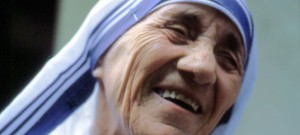 Part of our 18 days of Tesseracts, “Mom and Mother Teresa” by Candas Jane Dorsey was published in Tesseracts 9 and plays with religion in a comedic–and yet still poignant–way. I’m chatting with Candas about her story here as we each take turns talking about the story.
Part of our 18 days of Tesseracts, “Mom and Mother Teresa” by Candas Jane Dorsey was published in Tesseracts 9 and plays with religion in a comedic–and yet still poignant–way. I’m chatting with Candas about her story here as we each take turns talking about the story.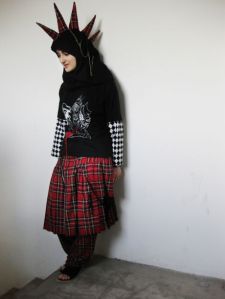
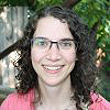
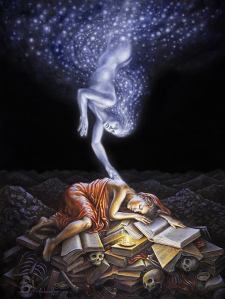
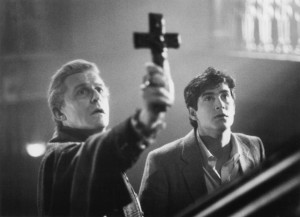
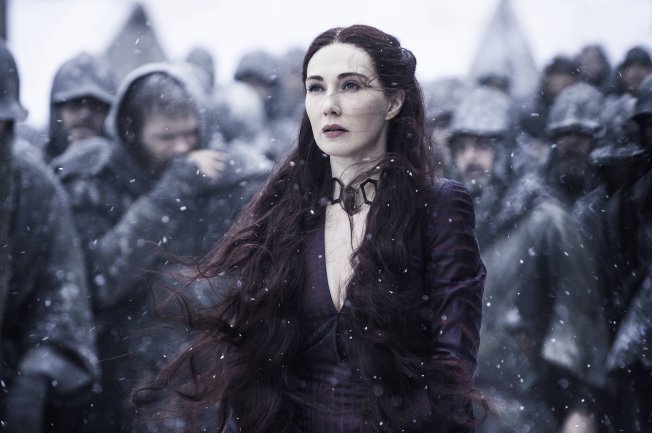
 Writing is a Sacred tradition in many cultures. We revere the books that come from these cultures. It’s also a very sacrificial act, one that takes a lot of courage, honesty, and time. I’d like to talk about writing during Lent.
Writing is a Sacred tradition in many cultures. We revere the books that come from these cultures. It’s also a very sacrificial act, one that takes a lot of courage, honesty, and time. I’d like to talk about writing during Lent.

